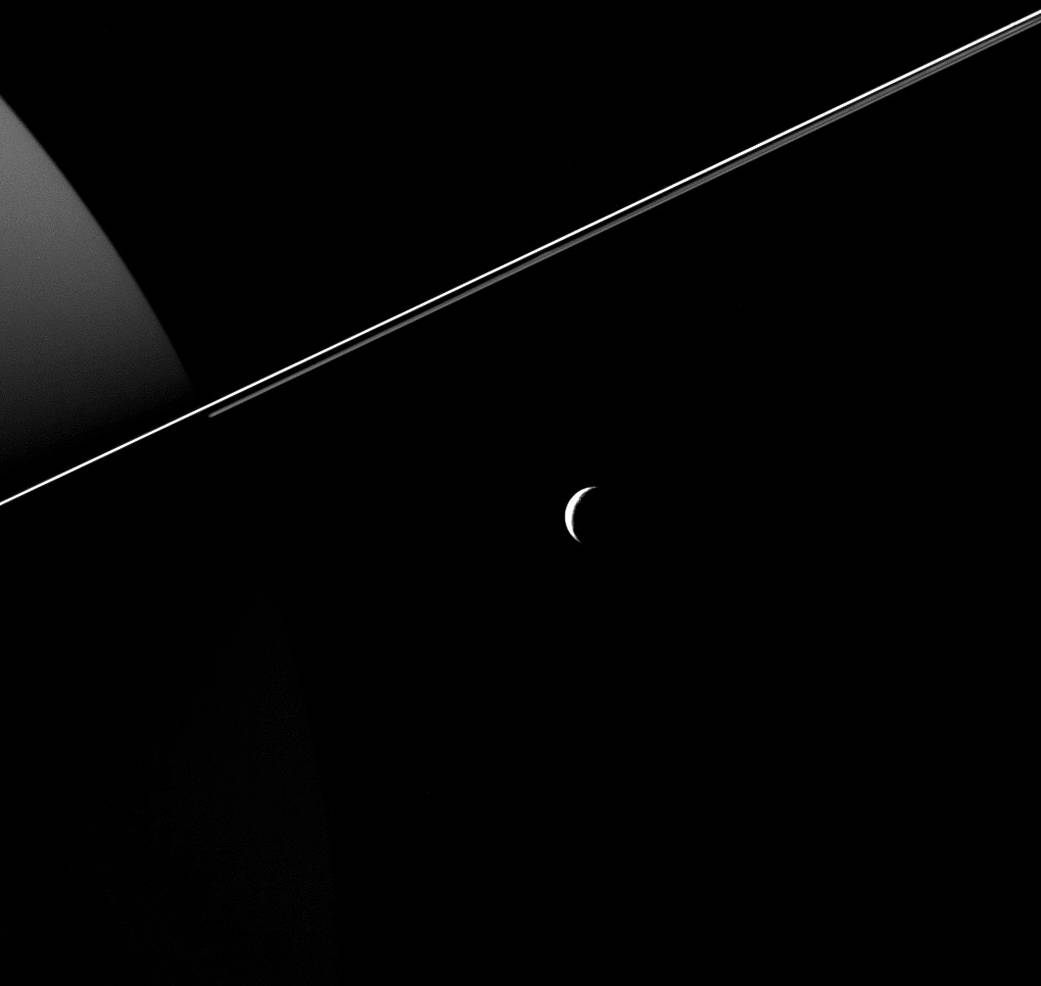
Tethys, dwarfed by the scale of Saturn and its rings, appears as an elegant crescent in this image taken by NASA’s Cassini Spacecraft. Views like this are impossible from Earth, where we only see Saturn’s moons as (more or less) fully illuminated disks.
The region of Saturn seen at left is on the planet’s night side. Reflected light from the rings dimly illuminates the planet’s northern hemisphere.
This view looks toward the anti-Saturn side of Tethys. North on Tethys is up and rotated 24 degrees to the left. The image was taken in visible light with the Cassini spacecraft wide-angle camera on Aug. 18, 2015.
The view was acquired at a distance of approximately 184,000 miles (296,000 kilometers) from Tethys. Image scale is 11 miles (18 kilometers) per pixel.
The Cassini mission is a cooperative project of NASA, ESA (the European Space Agency) and the Italian Space Agency. The Jet Propulsion Laboratory, a division of the California Institute of Technology in Pasadena, manages the mission for NASA’s Science Mission Directorate, Washington. The Cassini orbiter and its two onboard cameras were designed, developed and assembled at JPL. The imaging operations center is based at the Space Science Institute in Boulder, Colorado.
For more information about the Cassini-Huygens mission visit http://saturn.jpl.nasa.gov or https://www.nasa.gov/cassini . The Cassini imaging team homepage is at http://ciclops.org .
Credit: NASA/JPL-Caltech/Space Science Institute

























